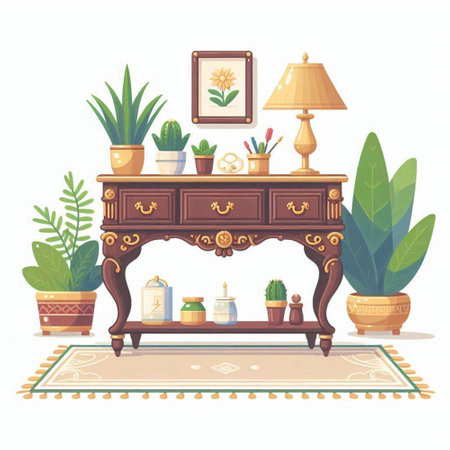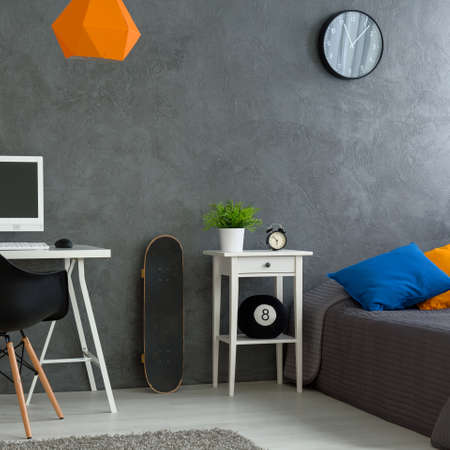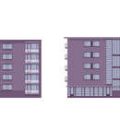Embracing Period Features
When designing a home office within the timeless walls of a Victorian or Edwardian house, it’s essential to start by celebrating the traditional architectural elements that give these properties their unique charm. Ornate cornices, elegant sash windows, and grand fireplaces are not merely decorative—they’re a testament to the craftsmanship and character of British homes built in this era. Instead of hiding or removing these features, consider how they can become focal points in your workspace. For example, positioning your desk near a large sash window allows you to enjoy natural daylight and leafy views, while an intricately detailed fireplace can double as a sophisticated backdrop during virtual meetings. By thoughtfully integrating these period details into your office layout, you create a space that honours history while providing a functional, inspiring environment for modern work.
Modern Comforts in a Classic Setting
When it comes to designing a home office within the elegant bones of a Victorian or Edwardian house, achieving the right balance between old-world charm and modern convenience is key. The soaring ceilings, ornate cornices, and original fireplaces are delightful features that add character, but integrating today’s work essentials requires careful thought. Instead of overwhelming these period details with heavy-handed modernity, consider selecting contemporary furnishings that complement rather than compete with the historical backdrop.
Start by choosing ergonomic chairs and desks that provide comfort for long workdays without looking out of place. For instance, opt for streamlined shapes in muted tones or natural materials like oak or walnut—these finishes echo the traditional woodwork often found in these homes. Standing desks with adjustable heights are an excellent choice for flexibility, but look for designs with classic lines or wooden elements to soften their appearance. Below is a table to help you match modern office needs with period-appropriate solutions:
| Modern Office Need | Period-Friendly Solution |
|---|---|
| Ergonomic Desk Chair | Upholstered armchair in tweed or leather |
| Height-Adjustable Desk | Solid wood sit-stand desk with brass fixtures |
| Cable Management | Woven baskets or antique-style cable covers |
| Desk Lighting | Contemporary lamp with brass or ceramic base |
| Storage Solutions | Bespoke cabinetry mirroring original skirting boards |
The goal is to ensure every piece feels intentional, adding function without sacrificing the unique atmosphere. Modern comforts like wireless charging pads can be tucked discreetly into drawers or built-in shelves. Meanwhile, soft textiles—think British wool throws or velvet cushions—help bridge the gap between past and present, offering both cosiness and continuity. By honouring the building’s heritage while meeting today’s flexible work demands, your home office becomes a harmonious blend of tradition and modernity.

3. Colour Palettes and Textures
Creating a harmonious home office in a Victorian or Edwardian UK house begins with selecting colour palettes that pay homage to the past while feeling fresh and current. Traditional interiors from these eras often featured muted, sophisticated hues—think dusky rose, sage green, dove grey, and deep navy. These subtle tones form a serene backdrop that feels both timeless and calming, perfect for maintaining focus during working hours.
To add depth and interest, layering tactile, modern materials is key. Pair original features like ornate cornices or wood panelling with contemporary finishes such as matte metal desk lamps, velvet cushions, or smooth ceramic accessories. These contrasting textures bridge the old and new, creating a workspace that is both visually appealing and inviting to touch.
Consider introducing natural elements—wool throws over an antique armchair or a sisal rug beneath your desk—to soften hard surfaces and bring warmth into the room. A thoughtfully chosen palette and mix of textures not only reflect the home’s heritage but also enhance comfort and productivity, ensuring your office is a space where tradition and modernity blend seamlessly.
4. Storage Solutions with Heritage Style
Creating a home office in a Victorian or Edwardian UK house often means working with period features, quirky alcoves, and intricate mouldings. To maintain the elegant character of these homes while keeping your workspace organised, storage solutions must be both practical and in harmony with heritage style. Built-in shelves, concealed cabinets, and carefully restored period furniture are key to blending tradition with modern needs.
Built-In Shelves: Making Use of Every Nook
Victorian and Edwardian homes are known for their high ceilings and deep alcoves. Custom-built shelves can transform these spaces into functional storage without disturbing original features. Opt for painted finishes in classic tones—think Farrow & Ball’s muted greens or off-whites—to complement ornate cornicing and woodwork. Open shelving allows you to display curated books or vintage finds, adding personality while keeping essentials within reach.
Concealed Cabinets: Tidy Yet Timeless
Modern life demands a place to hide away paperwork, tech gadgets, and all manner of cables. Concealed cabinets, especially those styled to match original skirting boards or wall panelling, offer an unobtrusive solution. Consider bespoke cabinetry built under bay windows or within chimney breasts; these spots are often overlooked but can yield generous storage while maintaining the room’s historic charm.
Comparing Storage Solutions
| Storage Type | Main Advantage | Heritage-Friendly Feature |
|---|---|---|
| Built-in Shelves | Makes use of awkward spaces; easy access | Customisable finishes; highlights period details |
| Concealed Cabinets | Keeps clutter out of sight; maximises space | Can mimic original joinery; discreet integration |
| Restored Period Furniture | Adds character and authenticity | Preserves history; blends old with new functions |
Restored Period Furniture: Character Meets Practicality
No home office in a heritage property is complete without at least one piece of lovingly restored period furniture. Whether it’s a Victorian mahogany writing desk or an Edwardian oak filing cabinet, these pieces ground your workspace in the past while serving present-day needs. Look for antiques at local markets or family heirlooms—restoring them not only preserves British craftsmanship but also creates unique storage options that mass-produced units simply can’t match.
Tips for Seamless Integration
- Mix and Match: Pair contemporary organisational tools—like wire baskets or minimalist trays—with antique bookcases for a fresh yet respectful look.
- Clever Labelling: Use vintage-style labels on drawers or boxes to keep everything tidy while nodding to period aesthetics.
- Sympathetic Lighting: Install picture lights above shelves or inside cabinets to highlight both your collections and the craftsmanship of built-in units.
The secret to successful storage in a Victorian or Edwardian home office is marrying organisation with character. By thoughtfully incorporating built-in shelves, concealed cabinets, and restored furniture, you create a workspace that feels both efficient and unmistakably British—a perfect blend of tradition and modernity.
5. Lighting: Merging Old and New
Lighting in a Victorian or Edwardian home office is all about striking the perfect balance between period character and modern function. These classic British homes often boast large sash windows, allowing abundant natural daylight to pour in—an invaluable asset when creating an inviting workspace. To make the most of this, position your desk near the window, letting the shifting daylight energise your workday while celebrating the home’s original features.
However, British weather isn’t always dependable for sunlight, so layering your lighting becomes essential. Traditional pendant lights with ornate detailing—think brass fittings or frosted glass—can be hung from high ceilings to echo the home’s heritage, casting a warm ambient glow across the room. Pair these with subtle modern task lamps in muted tones on your desk or shelving. These discreet fixtures provide focused illumination for reading or computer work without clashing with period details.
The key is to avoid over-modernising; select lighting that complements existing cornices and picture rails rather than competing with them. Soft LED bulbs offer energy efficiency while mimicking the gentle warmth of vintage filament lamps, helping to create a space that feels both welcoming and functional throughout the day. By thoughtfully blending old and new light sources, your home office can remain bright and practical while honouring the unmistakable charm of its Victorian or Edwardian roots.
6. Finishing Touches: Art, Fabrics, and Greenery
Bringing together the old-world charm of a Victorian or Edwardian home with fresh, contemporary touches is all about the final details. Layering in British artwork offers a thoughtful nod to heritage—think watercolours of local landscapes, vintage railway posters, or even striking modern prints by emerging UK artists. These pieces instantly imbue your workspace with character and a sense of place, while sparking daily inspiration.
Soft furnishings are equally essential. Incorporate textured fabrics such as tweed cushions, velvet throws, or even a tartan rug to evoke that unmistakable British cosiness. These tactile layers not only soften ornate woodwork and stately proportions but also help absorb sound—a practical bonus for home working. Don’t shy away from mixing classic motifs like damask with bold geometric prints; this juxtaposition bridges eras beautifully and keeps your office feeling fresh rather than fusty.
Finally, introduce houseplants to breathe new life into your workspace. A potted fern on a sash window sill or trailing ivy on a period fireplace mantel adds vibrancy and warmth without overwhelming the room’s original features. Opt for hardy varieties like peace lilies or snake plants if you’re new to indoor gardening—they thrive in typical British light conditions and require minimal upkeep.
Together, these finishing touches—artwork rooted in local culture, sumptuous soft furnishings, and lush greenery—bring personality and warmth to your home office. They balance the elegance of traditional architecture with the energy of modern living, ensuring your workspace feels both grounded in history and ready for today’s creative pursuits.


